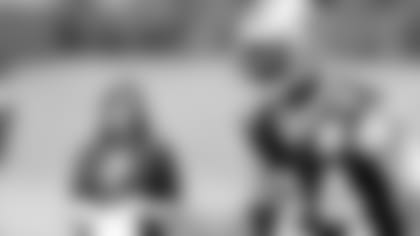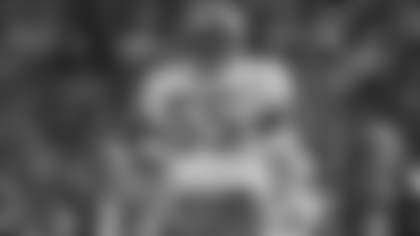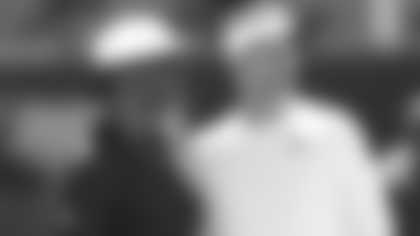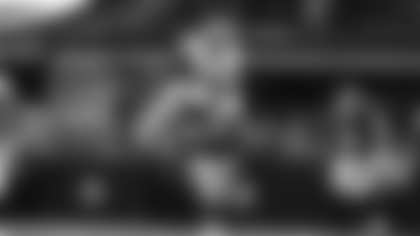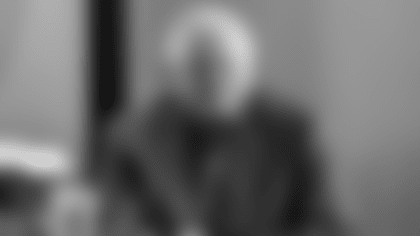When the Cowboys traded up in the 2012 NFL Draft to select LSU cornerback Morris Claiborne at No. 6 overall, the pick came with certain expectations. As the consensus top defensive player available in the draft class, many figured Claiborne would step in and immediately become a shutdown cornerback. Such expectations were never reasonable, though; in the preseason, I used the past rookie seasons of other highly-drafted cornerbacks to **project Claiborne at 60 tackles and four interceptions**. Claiborne ended up with 55 tackles and one pick, the latter stat being the one that most use to (unfairly) grade his 2012 play.
Claiborne didn't live up to most people's expectations in his rookie season, but the good news is that there's plenty of evidence to suggest that he's still the player the Cowboys believed him to be before the start of last season. Here are four reasons Claiborne will have a big second year.
1. Claiborne was already pretty good in 2012.
A few weeks ago, I labeled Claiborne as one of **my breakout players**. The primary reason is that he actually played pretty well as a rookie in regards to the stats that predict future success. Whether it was due to his own struggles or former defensive coordinator Rob Ryan's scheme, Claiborne didn't make the big plays everyone anticipated. But that doesn't mean he didn't cover well:
When analyzing cornerbacks, I like to look at yards per route. That metric doesn't penalize cornerbacks for having good coverage. If they aren't targeted on a particular play, they're rewarded for good coverage. Claiborne actually ranked in the top 25 in the NFL in yards allowed if we take into account all of the snaps he was in coverage. That suggests that Claiborne, despite hauling in just one interception, played as a low-end No. 1 cornerback in his rookie season. As the targets increase, so will the picks.
Claiborne was targeted only 69 times as a rookie, 18 fewer than veteran Brandon Carr. That's a good sign and suggests Claiborne was in proper position most of the time.
2. He's going to play more zone coverage.
Fair or not, Claiborne will be judged on his ability to secure interceptions in 2013. With a year of experience and a shift in defensive philosophy, he should be able to deliver. The Cowboys are going to play a lot more zone coverage this year than they did under Ryan, meaning Claiborne will be able to read the quarterback more often as opposed to having his back turned to the passer while running with his man. Zone cornerbacks have historically been able to make far more plays than those who play primarily man coverage for just this reason.
3. Claiborne bulked up.
Claiborne has good height at 5-11, but he came into Dallas a little light at around 185 pounds. After bulking up in the offseason, Claiborne is playing at closer to 193 pounds right now. That should help him in his press, while fighting for passes in tight coverage, and in the running game.
4. He's still the No. 6 overall pick, now with a year of NFL experience.
It would be a mistake to judge Claiborne solely on his first year in the league. There's a big difference between a first-round pick with 55 tackles and one interception and an undrafted free agent with the same stats. In all likelihood, the latter player overachieved, meaning his play would be likely to regress in his second year. The same isn't true for Claiborne, so the fact that he was a top-10 pick in the draft just one year ago is an important factor in his future outlook.
In 2012, we saw a second-year cornerback in Patrick Peterson make huge strides on defense, picking off seven passes after hauling in just two during his rookie campaign. That's a trend among most second-year cornerbacks; top-10 cornerbacks drafted since 2000 have increased both their interceptions (by 0.63 per player) and tackles (by 15 per player), despite seeing fewer targets as a group. That's good news for Claiborne.
Using those other highly-drafted cornerbacks as a baseline and considering the Cowboys' scheme switch, it's not unreasonable to expect four picks and 75 tackles from Claiborne in his second season. But remember that while those interceptions are obviously important to the team, they're very fluky. The true gauge of Claiborne's improvement will be how many yards he surrenders on a per-route basis. He gave up 1.21 yards per snap that he was in coverage as a rookie. If that number drops to closer to 1.00, Claiborne would probably rank in the top 15 in the league, a great indicator that the Cowboys will ultimately get what they paid for in the draft.



